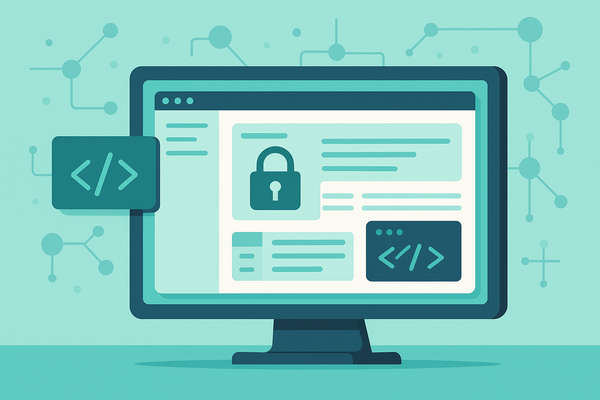How to Get PayPal OAuth 2.0 Client ID and Secret - Step-by-Step Tutorial

Ever been about to integrate PayPal into your app, only to find yourself staring at a developer dashboard that looks like it was designed by someone who speaks only in technical jargon? You're not alone. Most developers hit this wall when they need to set up PayPal OAuth 2.0 credentials. The good news is that getting your PayPal Client ID and Secret is actually pretty straightforward once you know where to look. OAuth 2.0 might sound intimidating, but it's just PayPal's way of making sure your app can securely talk to their systems. Think of it as getting a special handshake that lets your application access PayPal's features on behalf of your users.
What's a PayPal OAuth 2.0? (The Simple Version)
Think of PayPal OAuth 2.0 as your app's special password to access PayPal's features. Instead of handling sensitive payment information directly, OAuth 2.0 gives you a secure way to connect your application with PayPal's services. Your Client ID is like your username - it identifies your app to PayPal. Your Client Secret is like your password - it proves your app is legitimate. Together, they create a secure handshake that lets your application:
- Process payments safely without storing credit card information
- Access user payment preferences and history (with permission)
- Handle refunds and transaction management
- Integrate PayPal's checkout experience into your platform
- Use PayPal's advanced features like subscriptions and recurring payments
This system keeps everyone safe while giving your app the power to handle payments like a pro.
Ready to Generate Your OAuth 2.0 Credentials?
Let's walk through the exact steps to get your PayPal Client ID and Secret. This tutorial will show you everything you need to know:
Pro tip: As soon as you get your credentials, copy them to a secure location. You'll need them for your integration, and PayPal won't show your secret again for security reasons.
Are you a service provider looking to collect credentials from your clients? Try Creddy.me for free and collect your credentials in minutes, not days.
Why Would You Want This OAuth 2.0 Anyway?
The 'Aha!' Moments:
🛍️ E-commerce Store Integration
Customer adds items to cart → clicks PayPal checkout → authenticates with PayPal → payment processes seamlessly → customer receives confirmation → you get paid instantly. No credit card forms, no security headaches, just smooth transactions.
🔄 Subscription Management
User signs up for monthly service → PayPal handles recurring billing → automatic payment processing → you focus on delivering value → customers enjoy hassle-free renewals. Perfect for SaaS products, memberships, or any recurring revenue model.
📱 Mobile App Payments
User wants premium features → taps PayPal payment → quick authentication → instant access granted → seamless user experience. No typing credit card numbers on tiny screens.
🎯 Marketplace Solutions
Seller lists product → buyer purchases → PayPal splits payment → seller gets paid → platform takes commission → everyone's happy. Ideal for multi-vendor platforms and marketplaces.
Real-World Integration Examples:
- WooCommerce - Add PayPal checkout to WordPress stores
- Shopify - Enable PayPal payments in your online store
- React/Vue Apps - Integrate PayPal buttons in modern web apps
- Mobile Apps - Add PayPal SDK to iOS/Android applications
- Custom Platforms - Build PayPal integration into any system
Keep Your OAuth 2.0 Safe (It's Easier Than You Think)
Your PayPal credentials are valuable, but protecting them doesn't require a computer science degree. Here are the golden rules:
- Never commit secrets to version control - Use environment variables or secure config files that aren't tracked by Git
- Use different credentials for testing and production - PayPal provides sandbox credentials for development, keep them separate
- Store credentials securely - Use your hosting platform's secure environment variable system
- Rotate credentials periodically - Generate new ones every few months, especially if team members change
Quick Test: After integration, try a small test transaction in sandbox mode to make sure everything works before going live.
The Professional Way to Collect Client Credentials
"Hey, I need your PayPal credentials to set up your integration."
"Uh... how do I get those?"
"Just follow this 12-step process, create a developer account, navigate through three different dashboards..."
Sound familiar? What if there was a better way?
Imagine sending your client a simple link where they can securely provide their PayPal credentials without the back-and-forth emails, confusing screenshots, or security risks. That's exactly what Creddy.me does.
Instead of spending hours explaining technical processes, you focus on building great integrations while your clients safely share their credentials through a secure, guided process. No more "Can you send me your secret key via email?" conversations. No more explaining the difference between sandbox and production environments.
Ready to streamline your credential collection process? Try Creddy.me today and turn credential collection from a weeks-long process into a five-minute task.
What's Next?
Congratulations! You now have your PayPal OAuth 2.0 credentials and understand how to use them safely. This opens up a world of payment integration possibilities for your applications. Remember, PayPal is just one of the 200+ platforms that modern applications integrate with. Whether you're building the next big e-commerce platform or just adding payment processing to an existing app, you're now equipped with the knowledge to move forward confidently.
Need help managing credentials for other platforms too? Check out Creddy.me for a complete credential management solution.




